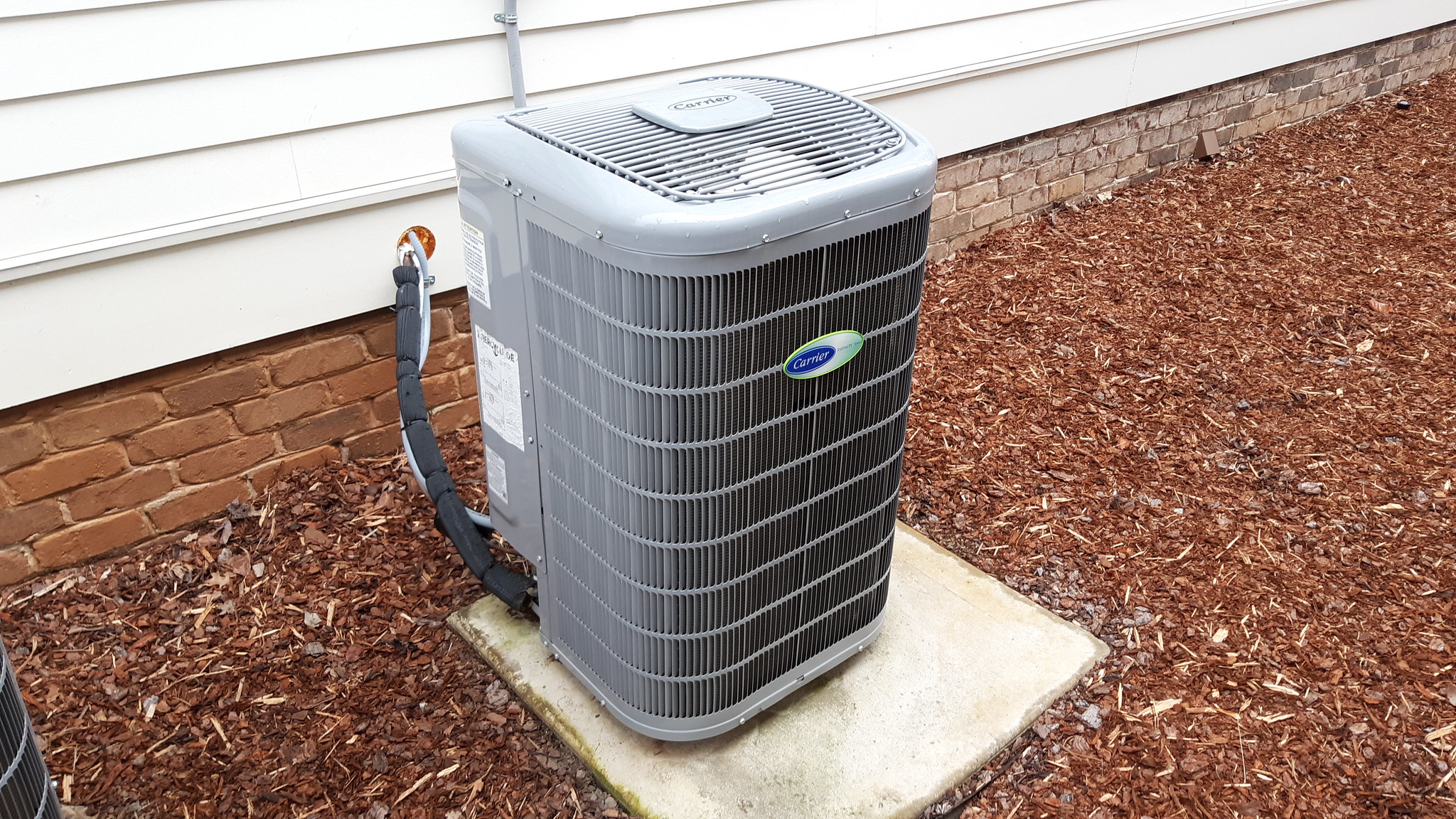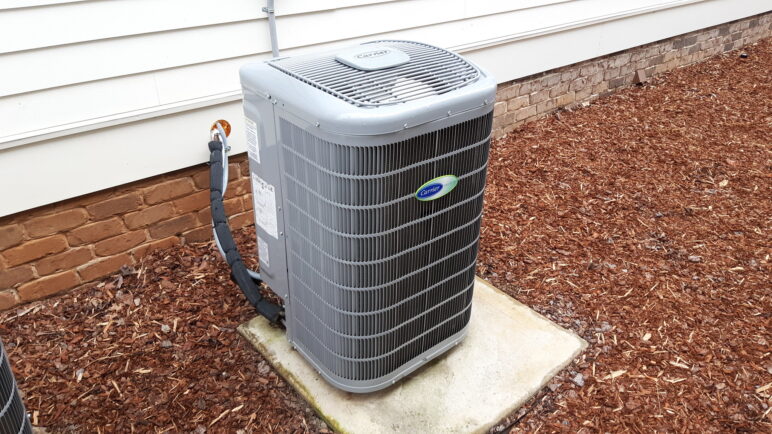Between 2003 and 2018, about 55 percent of adults in the United States abandoned their landline telephones in favor of wireless ones. Phone companies that rode the wave of innovation and diversification reaped financial rewards, while those that stuck with the outmoded landline strategy faced demise.
Like landline telephones, Cascadia’s gas utilities’ main business is quickly becoming obsolete. Gas companies are reckoning with disruption from all angles: consumers are buying electric heat pumps instead of gas furnaces, federal laws are boosting electric appliances, and new regulation is constraining gas customer growth. To survive, gas utilities will need to transform into enterprises that advance, rather than obstruct, the clean energy transition.
To survive, gas utilities will need to transform into enterprises that advance, rather than obstruct, the clean energy transition.

The decarbonization solutions of hydrogen and renewable natural gas (RNG) that most gas utilities favor are unrealistic, dangerous, and expensive, and only in a few cases can they compete economically with electrification. But a few gas companies are experimenting with novel, climate-friendly ventures, including clean heat and electrification products and services.
Some of these ideas, namely infrastructure-intensive heating investments like GeoNetworks and district energy, meet the traditional criteria for regulated utility businesses and merit active support from lawmakers and regulators. Indeed, leaders might do well to even require that utilities pilot them. Many other ideas do not meet these criteria, but they are still worth exploring for their potential to speed climate progress and to interrupt utilities’ continuing climate obstructionism. Policymakers considering the gas industry’s nontraditional reinvention proposals will need to take care to protect ratepayers, which will include extracting concessions from gas companies to shrink the gas system, and to shield smaller market competitors from economic injury.
Why keep gas companies in business?
For climate hawks, putting gas utilities out of business might seem like a top priority. However, it may be worthwhile to keep the industry solvent—in a reimagined, climate-friendly form—not only both during the decarbonization transition and well into the future.
Here are four reasons gas business diversification is even worth considering:
- Preventing climate obstructionism. With dimming prospects, gas utilities have been using their clout in policy and regulatory forums to mislead the public and forecast doomsday scenarios about a world without gas. For example, NW Natural, Oregon’s largest gas utility, has been bankrolling a referendum campaign to reverse Eugene’s gas ban in new homes and has pumped more than $1 million into a front group fighting the city’s policy. If gas utilities could reinvent themselves as decarbonization enterprises that earn lucrative returns, not only might they stop fighting against climate action but they might also begin fighting for it.
- Leveraging scale. Decarbonization solutions will have a tough time scaling up fast enough without some coordinated roll-out across blocks, neighborhoods, and cities. Gas utilities might be up to the task. They already operate across large territories, with thousands of miles of pipes snaking under Cascadia’s cities and towns. Today these utilities count more than 4 million gas customers in the region.1 Leveraging gas utilities’ broad reach and expertise in the energy sector to advance building electrification could speed climate action.
- Protecting retirees’ savings. Utilities provide a steady income for millions of investors, most of whom are institutional investors focused in part on dependable returns for retirees. For example, investors in Puget Sound Energy, Washington’s largest utility, include four large Canadian pension holding companies charged with managing the pensions for public sector employees in Canada, and institutional investors hold 77 percent of the ownership shares in NW Natural. Failing gas utilities could jeopardize the nest eggs of millions of retirees, from Canada’s teachers and Washington’s firefighters to Oregon’s 401(k) holders.
- Maintaining gas system affordability and reliability. Today 52 percent of Cascadian households are hooked up to the gas system (see Table 1). This ratio will dwindle as new dwellings go electric and as existing ones convert to all-electric, but the customers who remain connected through the transition will still need reliable heat and hot water. New revenue strategies for gas utilities could help maintain their solvency while other policies compel them to shrink the pipeline system and address stranded investments.
Table 1. More than half of Cascadian households are connected to the gas pipeline.
| Total households | Number of households that use gas | Percentage of households that use gas | |
|---|---|---|---|
| British Columbia | 1,996,399 | 1,250,351 | 63% |
| Alaska | 260,000 | 160,000 | 62% |
| Idaho | 660,000 | 430,000 | 65% |
| Montana | 430,000 | 270,000 | 63% |
| Oregon | 1,650,000 | 788,177 | 48% |
| Washington | 2,940,000 | 1,251,963 | 43% |
| Totals | 7,936,399 | 4,150,491 | 52% (avg.) |
Of course, there are other ways to achieve these goals besides gas companies reinventing themselves. For example, regulators and lawmakers could protect ratepayers from unaffordable gas bills through financial mechanisms like accelerated depreciation or securitization, and institutional investors could and should divest from fossil fuels like gas as soon as possible to lower retirees’ financial risk. In the meantime, though, gas business diversification is worth exploring.
Taking the gas out of the gas business
Gas utilities are already beginning to experiment with new ventures that could keep their businesses afloat and allow them to claim a piece of the impending tidal wave of electrification spending. Three new business ideas include
- providing clean heating and cooling solutions as thermal utilities,
- offering non-heating clean energy products and services, and
- financing electrification.
Let’s take them in turn.
1. Providing clean heating and cooling solutions as thermal utilities
Instead of selling cubic feet of gas, a gas company could reinvent itself as a thermal utility that offers clean heating and cooling services. Under this model, the utility would provide homes or businesses with the necessary heating or cooling equipment, like an air-source or ground-source heat pump. The customer would pay a monthly fee to the utility that would cover the cost of the energy service and the equipment investment plus some profit for the utility. Customers would benefit by avoiding the upfront costs of clean and efficient heating and cooling equipment while enjoying the equipment’s output. The utility would benefit from a steady stream of revenue from the energy service the equipment provides.
At least two US gas utilities are already venturing into this space with different strategies.
- Eversource, New England’s largest electric and gas utility, is piloting a thermal utility approach with GeoNetworks (which Sightline has written about extensively). The utility will be providing heating and cooling services to 45 buildings in Framingham, Massachusetts, using a networked geothermal system to pull heat out of the earth in the winter and put it back into the ground during the summer. Eversource is paying the upfront costs and installing all the equipment needed to heat and cool the subscribed building for the pilot (e.g., heat exchangers, geothermal ground loop). Customers will pay a monthly fee proportional to the amount of heating or cooling they request. Eversource’s gas customers will ultimately pay for the cost of the geothermal equipment through their rates, much the same as they would were Eversource to invest in a gas pipeline.
- VGS, Vermont’s only gas utility, launched an electric appliance leasing program for heat pump water heaters in 2022 and extended it to centrally ducted heat pumps in 2023. Customers pay $29–$46 per month for heat pump water heaters and $58–$100 per month for centrally ducted heat pumps, depending on the equipment size and customer’s address. Using its existing technician staff, VGS offers customers installation scheduling and around-the-clock service. Vermont regulators allow the utility to earn a regulated rate of return on the equipment it purchases for the program, the same way it would on gas pipeline investments. In a nod to the benefits of electrification, regulators in Vermont also permit VGS to offer these electric appliance leases outside of its gas service area, swelling its opportunity for new revenue.
2. Offering non-heating clean energy products and services
In addition to switching heating systems from fossil fuels to clean electricity, households and businesses will need to decarbonize other appliances and vehicles, access clean electricity, and invest in energy efficiency. Incentives like those outlined in the Inflation Reduction Act will encourage them to do so. Savvy gas utilities could capture some of this growth market.
At least two gas utilities are pursuing programs that advance clean energy goals beyond heating conversions.
- New Jersey Resources, the holding company for New Jersey Natural Gas, has diversified by bringing solar to more than 8,500 customers through its unregulated Home Services subsidiary, NJRHS. Since 2010 the NJRHS Sunlight Advantage program has installed, operated, and maintained solar generation systems on homeowners’ rooftops with service terms that offer savings of up to 40 percent on electricity bills. Under this model, NJRHS owns the solar generator on the customer’s roof and maintains the system. It charges the homeowner a monthly fee for the power the system generates. It’s a win for the homeowner, who locks in a fixed power cost that is often below market rates for electricity, and it’s a win for the service provider, which earns a low-risk multiyear revenue stream and qualifies for generous federal and state subsidies for solar.
- Duke Energy One, an unregulated subsidiary of North Carolina-based utility Duke Energy, offers a suite of electrification services for business customers nationwide through its Direct Efficiency program. Options include Efficiency-as-a-Service (EaaS),2 EV charging, battery storage, and microgrids. In its EaaS program, Duke Energy One works with customers to assess energy and carbon usage and identify savings opportunities. Once contracted by the customer, Direct Efficiency staff designs, installs, and maintains equipment to meet the customer’s energy savings goals, with no upfront costs to the customer. The customer pays back a portion of the monthly savings from the project, generating income for Duke Energy One. Duke Energy One is also offering EV charging.
3. Financing electrification
Finally, utilities might diversify into lending services for new, clean electric appliances or other electrification upgrades. Instead of a rate of return on infrastructure investments, the utility would earn interest on consumer loans, much the same as a bank would. But unlike a bank loan, utilities could offer on-bill financing, which puts the customer’s monthly payment for the loan directly on their utility bill. This model could extend financing to customers who might not qualify for a conventional loan, as customers’ utility payment history would back their creditworthiness. In a well-crafted program, customers’ monthly savings from the new, efficient equipment would fully offset the loan payment. For customers who terminate gas service in conjunction with the loan, gas companies could partner with the customer’s electric utility to put the loan repayment plan on their electric bill.
Sightline is not aware of gas utilities exploring this type of green financing model yet, but on-bill financing programs and clean energy loans are not new. Cascadian utilities, including Avista, Seattle City Light, and Orcas Power and Light (OPALCO), all offer on-bill repayment of loans for energy efficiency projects such as installing a heat pump or insulating a home. In British Columbia, the provincial government has set up a low-interest loan program to help homeowners finance the switch from fossil fuel heating systems to heat pumps. While these financing programs have their merits, none earns interest or profits for the utility. Third-party financiers (e.g., Financeit Canada, Puget Sound Cooperative Credit Union, and CRAFT3) and federal agencies (in the case of OPALCO) provide the capital for the loan, typically offering below-market rates for these programs as an incentive to encourage homeowners to upgrade their energy efficiency. If utilities were to independently explore lending and financing programs, they would need to fully investigate the market potential and income opportunities for lending money at or below market rates while continuing to protect ratepayers.
In British Columbia, some government-led lending programs for homeowners encourage electrification and energy efficiency investments. The northwest corner of the United States, however, unlike many other states, does not have “green banks,” which lend public (or sometimes private) funds to homeowners for electrification and energy efficiency.3 With the public lending door closed for now in Alaska, Idaho, Montana, Oregon, and Washington, and very few banking competitors offering these loans, a potential opportunity exists for the states’ utilities to fill the gap.
A key question for policymakers: Should Public Utility Commissions regulate utilities’ new, climate-friendly business lines?
Today’s gas utilities operate as regulated monopolies, which state and provincial laws authorize to sell gas within the bounds of a given service territory. But state and provincial laws do not authorize gas utilities to sell heat or electric appliances or offer banking services as regulated business lines.4 With their regulated status, utilities and their shareholders enjoy a guaranteed rate of return on capital investments and exclusive rights to serve customers in their service territory. In exchange, utilities must provide safe, available, reliable, and reasonably priced energy under regulator supervision.
Because of these perks, utilities are likely to want to maintain regulated status for any new ventures and to expand the types of investments on which they are allowed to earn a rate of return. (Under traditional regulatory models, utilities can only profit on infrastructure investments like new pipelines or meters.) In fact, Cascadian gas utilities are already proposing changes to what they can earn a regulated profit on. Washington House Bill 1619, a policy proposal the gas industry supported in the state’s 2023 legislative session, would have authorized gas utilities to earn a regulated rate of return on investments in rooftop solar, battery storage, community solar, and ground-source heat pumps. (It also would have broadened the opportunity for utilities to invest in RNG.) And House Bill 1589 would have opened the door for PSE to propose decarbonization schemes, including new business ventures that lower carbon emissions through electrification. PSE would earn a rate of return through the familiar regulatory process. Neither of these bills would have prevented other businesses from offering similar products and services or competing directly with gas utilities.
But not all new potential gas business models meet the traditional criteria for utility regulation, which include:
- the business providing essential services for public well-being, and
- a single provider being able to serve the overall demand at a lower total cost than any combination of smaller providers could (i.e., it is a natural monopoly).
Of the three business ideas above, only some forms of the first model (heating and cooling services) meet these criteria. That’s because heating and cooling is an essential service, and some versions of this model, namely GeoNetworks and district energy, effectively function as a natural monopoly given the large infrastructure outlays they require. (It is illogical to have multiple companies lay networks of pipes and compete to deliver heating services under a single street.) As such, it makes sense for policymakers to allow or even require utilities to pilot these ideas as regulated businesses and, in turn, protect consumers against unreasonable rate hikes and abrupt termination of essential heating and cooling services.
By contrast, heating and cooling services that do not require large infrastructure investments don’t meet these traditional criteria for utility regulation,5 nor do non-heating energy services and electrification financing. None of these is an essential service, and they all face low barriers to competition. (Think of the many rooftop solar installation companies, for example.) To date, it is largely unregulated subsidiaries of utilities that have ventured into non-heating and cooling energy products and services. (Any new lending services would certainly need to be regulated in some way to protect consumers, but not by public utility commissions.)
And expanding utility-regulated status to nontraditional ventures could be risky. Competitors like heating, ventilation, and air conditioning (HVAC) companies may challenge the utility’s entrance into the market, as they did a few years ago. In 2018, HVAC industry associations helped tank PSE’s pitch for a new water heater, furnace, and heat pump leasing program.
Nonetheless, the urgency of climate change demands that policymakers and regulators explore options beyond business as usual. Some risks may be worth accepting if these new ventures end utility obstructionism, maintain gas system reliability during the transition away from gas, speed decarbonization, and protect retirees’ nest eggs.
And policymakers and regulators can lower the risks to ratepayers by requiring concessions from the utilities, such as that they proactively shrink their gas footprint, not invest ratepayer money in new gas pipelines, and accept lower rates of return than utilities have historically enjoyed on gas investments. (For a fuller discussion of these ideas, see Sightline’s recent article on gas decommissioning and neighborhood electrification.) Ultimately, policymakers interested in having gas companies join “Team Climate” will need to recruit them in a way that protects ratepayers and smaller competitors.
Policymakers could pave the way for gas companies’ cleaner future
As Cascadia decarbonizes its economy, gas is certain to meet a necessary demise. But gas utilities don’t necessarily have to face the same end if they start exploring new, climate-friendly revenue opportunities. A few utilities are already venturing into new business models like thermal utilities and clean energy services to replace the fossil-fueled revenue streams that are slated to disappear in the coming decades. And there are good reasons to want gas utilities to exist in this reimagined form. Top among them: providing stability to gas consumers and preventing utilities’ ongoing climate obstructionism.
But these new business lines pose new challenges for policymakers and regulators. While utility regulation made sense for gas companies when their chief business was building expensive pipelines that snake beneath roads and private property, some new business ventures into competitive markets don’t meet traditional regulatory criteria. Nonetheless, gas companies are pushing for this status for new lines of business because of its guaranteed profit and familiar model. Policymakers and regulators considering regulatory innovation that could speed climate progress will need to proactively build in mechanisms to protect consumers and other business competitors from gas utilities’ overreach.











